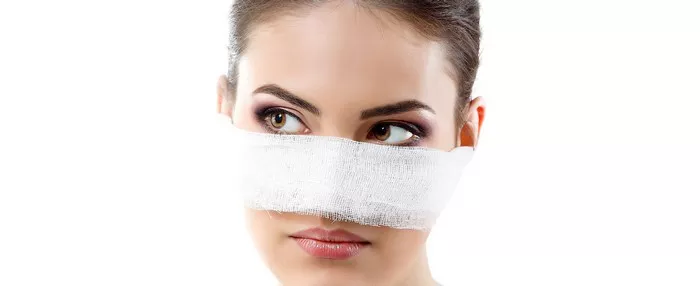Rhinoplasty, also known as nose surgery, is a cosmetic procedure that is designed to improve the appearance of the nose. Many people who are considering rhinoplasty wonder if the procedure can also change their smile. In this article, we will explore whether rhinoplasty can change your smile and what factors may affect the outcome of the procedure.
The Relationship Between the Nose and the Smile
The nose and the smile are closely connected, as the position and shape of the nose can affect the appearance of the upper lip and the teeth. When the nose is too large or too small, it can create an imbalance in the face that may affect the smile. For example, a nose that is too large may make the upper lip appear shorter, while a nose that is too small may make the upper lip appear longer.
In addition, the position of the nasal tip can also affect the appearance of the smile. If the nasal tip is droopy or too low, it can make the upper lip appear longer and the teeth appear smaller. On the other hand, if the nasal tip is too high or upturned, it can make the upper lip appear shorter and the teeth appear larger.
How Rhinoplasty Can Change Your Smile
Rhinoplasty can potentially change the appearance of your smile by altering the shape, size, and position of the nose. By reshaping the nose, the surgeon can create a more balanced and harmonious facial appearance that may also affect the appearance of the smile.
For example, if the nose is too large, the surgeon may reduce the size of the nasal bridge and the nasal tip to create a more proportionate nose. This can also improve the appearance of the upper lip and the teeth, creating a more attractive smile. Similarly, if the nasal tip is droopy, the surgeon may lift it to create a more youthful and refreshed appearance that may also improve the smile.
Factors That May Affect the Outcome
While rhinoplasty can potentially change the appearance of the smile, there are several factors that may affect the outcome of the procedure. These include:
The skill and experience of the surgeon: The surgeon’s skill and experience can have a significant impact on the outcome of the procedure. A skilled and experienced surgeon can create a natural-looking nose that complements the rest of the face and enhances the smile.
The patient’s facial anatomy: The patient’s facial anatomy can also affect the outcome of the procedure. For example, if the patient has a small chin or a weak jawline, the surgeon may need to consider these factors when planning the surgery to ensure a balanced and harmonious facial appearance.
The patient’s goals and expectations: The patient’s goals and expectations for the procedure can also affect the outcome. It is important for the patient to have realistic expectations and to communicate their goals clearly with the surgeon.
The healing process: The healing process after rhinoplasty can also affect the outcome of the procedure. It is important for the patient to follow the surgeon’s post-operative instructions carefully to ensure a smooth and successful recovery.
The Importance of Choosing a Skilled Surgeon
If you are considering rhinoplasty to improve the appearance of your nose and potentially your smile, it is important to choose a skilled and experienced surgeon. A skilled surgeon can help you achieve your goals and create a natural-looking nose that complements the rest of your face.
When choosing a surgeon, it is important to do your research and ask for referrals from friends and family. You should also schedule a consultation with the surgeon to discuss your goals and expectations for the procedure.
During the consultation, the surgeon will evaluate your facial anatomy and discuss the potential outcomes of the procedure. They may also use computer imaging software to show you what your nose may look like after the surgery.
Potential Risks and Complications
Like any surgical procedure, rhinoplasty carries some potential risks and complications. These may include:
Infection: Infection is a potential risk after any surgical procedure. Your surgeon will provide you with instructions on how to care for your nose after the surgery to reduce the risk of infection.
Bleeding: Some bleeding is normal after rhinoplasty, but excessive bleeding can be a potential complication. Your surgeon will monitor you closely after the surgery to ensure that bleeding is under control.
Scarring: While scarring is generally minimal after rhinoplasty, it is still a potential risk. Your surgeon will make incisions in inconspicuous areas to minimize scarring.
Changes in sensation: Some patients may experience temporary changes in sensation in the nose and surrounding areas after the surgery. This is usually temporary and will resolve over time.
Unsatisfactory results: While most patients are satisfied with the results of their rhinoplasty, there is a risk of unsatisfactory results. It is important to have realistic expectations and to communicate your goals clearly with your surgeon to minimize this risk.
Conclusion
In conclusion, rhinoplasty can potentially change the appearance of your smile by altering the shape, size, and position of the nose. However, there are several factors that may affect the outcome of the procedure, including the skill and experience of the surgeon, the patient’s facial anatomy, and the healing process. It is important to choose a skilled and experienced surgeon and to have realistic expectations for the procedure. By doing so, you can achieve a natural-looking nose that complements the rest of your face and enhances your smile.


